 Narrowsburg
NarrowsburgLight Rain Fog/Mist, 43°
Wind: 8.1 mph
 Narrowsburg
NarrowsburgAugust 18, 1920, the 19th Amendment to the Constitution was finally ratified, giving women in the United States of America the right to vote and, for the first time in history, the rights of full …
Stay informed about your community and support local independent journalism.
Subscribe to The River Reporter today. click here
This item is available in full to subscribers.
Please log in to continue |

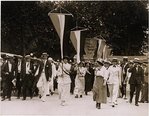
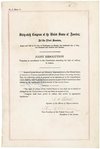
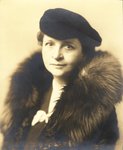
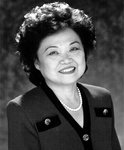
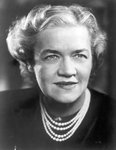
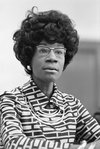
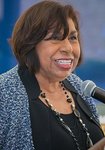
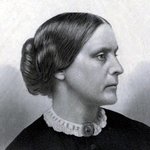
August 18, 1920, the 19th Amendment to the Constitution was finally ratified, giving women in the United States of America the right to vote and, for the first time in history, the rights of full citizenship. This fight took activists and reformers nearly 100 years to win. It was the single largest extension of democratic voting rights in our nation’s history, and it was achieved peacefully, through democratic processes.
The women’s suffrage movement began in 1848, at a women’s rights convention held in Seneca Falls, NY where women’s rights pioneers gathered to fight for a universal-suffrage amendment to the U.S. Constitution.
Since many women trailblazers, who dared to be different, have been overlooked in the history books. We decided that this would be a good time to shine the light on some.
Frances Perkins ( April 10, 1880 – May 14, 1965) was an American sociologist and workers-rights advocate who served as the U.S. Secretary of Labor from 1933 to 1945, the longest serving in that position, and the first woman appointed to the U.S. Cabinet under FDR. A little-known fact is that Perkins’ legacy includes her major role in the creation of Social Security, the 40-hour work week, the minimum wage law and the end of child labor. She also built the nation’s unemployment benefits system and established the first minimum wage and overtime laws through the Fair Labor Standards Act.
Margaret Chase Smith (December 14, 1897 – May 29, 1995) was the first woman to win election to both the U.S. House and the U.S. Senate. She was known as an independent and courageous legislator. Famous for being among the first to criticize the tactics of McCarthyism in her 1950 speech “Declaration of Conscience,” Smith, a moderate Republican who represented Maine, bravely denounced Sen. McCarthy at a time when others feared speaking out would ruin their careers.
In 1968, Shirley Chisholm (November 30, 1924 – January 1, 2005) became the first African-American to be elected to Congress, where she worked on the Education and Labor Committee and helped form the Black Caucus. During her time in Congress, she was known as a champion of minority education and employment opportunities. In 1972, Chisholm became the first African-American woman to make a bid to be President of the United States when she ran for the Democratic nomination. She served seven terms in the House before retiring from office to become a teacher and public speaker.
Patsy Matsu Takemoto Mink (December 6, 1927 – September 28, 2002) was a third-generation Japanese-American, born and raised on the island of Maui. A true trailblazer, Mink won a seat in the U.S. House of Representatives in 1964. At the time, she was the first woman of color, first Asian-American woman elected to Congress and the first woman elected to Congress from Hawaii. In 1970, she became the first person to oppose a Supreme Court nominee on the basis of discrimination against women. In 1972, Mink was the first Asian-American woman to seek the presidential nomination of the Democratic Party. She ran in the 1972 election, entering the Oregon primary as an anti-war candidate
Sylvia Mendez (born June 7, 1936) is an American civil rights activist of Mexican-Puerto Rican heritage. Seven years before 1954’s Brown v. Board of Education ruling integrated America’s schools, Mendez’s family tried to register her into an “all-white” school in Westminster, California. The school’s superintendent testified that those of Mexican descent were “intellectually, culturally and morally inferior to European-Americans.” Sylvia’s parents refused to accept that decision. Uniting with other local Chicano families, they hired a lawyer and won the case. In 1946 California schools became integrated by law.
Susan B. Anthony (February 15, 1820 – March 13, 1906) met Elizabeth Cady Stanton (November 12, 1815 – October 26, 1902) at the Seneca Falls Convention held in 1848. Both women were social reformers and women’s rights activists who played a pivotal role in the women’s suffrage movement. In 1866, they initiated the American Equal Rights Association, which campaigned for equal rights for both women and African-Americans. In 1869, they formed a new group called the National Woman Suffrage Association and began to fight for a universal-suffrage amendment to the U.S. Constitution.
On Tuesday, August 18, we celebrate the 100th Anniversary of the 19th Amendment to the Constitution of the United States.
Sixty-sixth Congress of the United States of America; At the First Session,
Begun and held at the City of Washington on Monday, the nineteenth day of May, one thousand nine hundred and nineteen.
JOINT RESOLUTION
Proposing an amendment to the Constitution extending the right of suffrage to women.
Resolved by the Senate and House of Representatives of the United States of America in Congress assembled (two-thirds of each House concurring therein), That the following article is proposed as an amendment to the Constitution, which shall be valid to all intents and purposes as part of the Constitution when ratified by the legislature of three-fourths of the several States.
“ARTICLE ————.
“The right of citizens of the United States to vote shall not be denied or abridged by the United States or by any State on account of sex.
Congress shall have power to enforce this article by appropriate legislation.”
Comments
No comments on this item Please log in to comment by clicking here